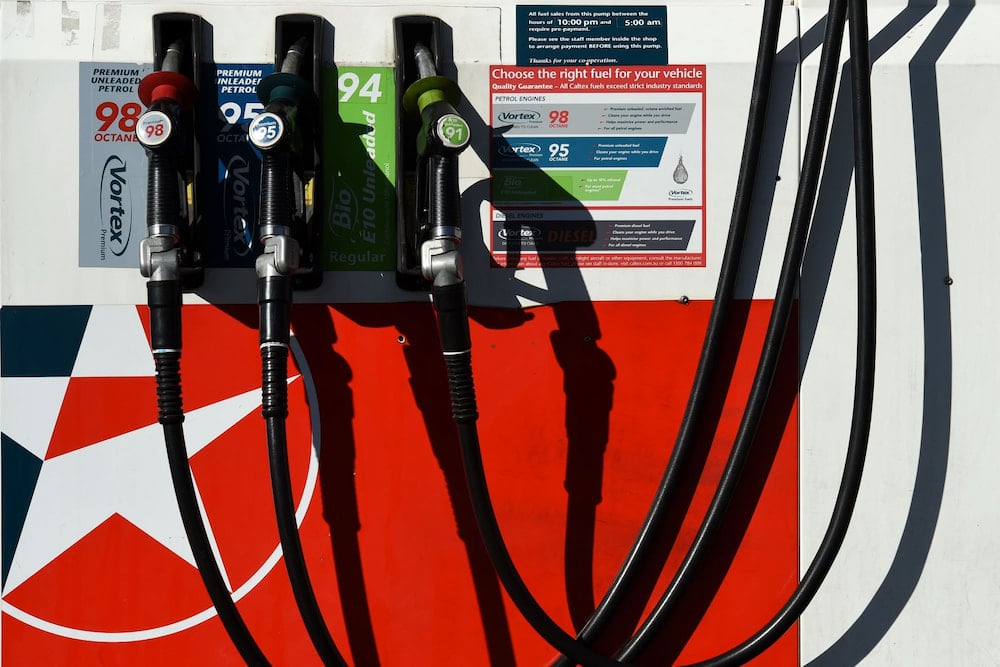Petrol prices have struck a record high on average as global oil prices continue to rise, fuelling concerns about both the inflation and interest rate outlook.
The Australian average for unleaded petrol rose 8.8 cents per litre in the past week to a record of 169.5 cents.
They were particularly high along the east coast, topping 170 cents per litre, and were even above 180 cents per litre in Brisbane and Adelaide.
“As a net importer of refined petroleum, the cost of fuel continues to increase for Aussie petroleum retailers,” Commonwealth Securities senior economisr Ryan Felsman said.
“In turn, servos are passing on higher costs to consumers at the pump.”
Rising fuel price are expected to be a feature of Wednesday’s September quarter inflation figures.
Economists’ forecasts point to a 0.8 per cent rise in the consumer price index for the September quarter.
While this would see the annual rate ease to 3.1 per cent compared to the coronavirus-related 3.8 per cent spike as of the June quarter, it would still remain at the top end of the RBA’s two to three per cent inflation target.
But underlying inflation – which smooths out excessive price swings and is more linked to interest rate decisions made by the RBA – is likely to remain subdued.
Predictions centre on underlying inflation rising 0.5 per cent in the September quarter to 1.9 per cent annually.
However, financial markets see upside risk to these forecasts, particularly in light of New Zealand’s inflation result, which saw annual inflation spike to almost five per cent and the highest since 2011.
“We doubt that Australia’s CPI print will show anything like the same sort of broad-based strength and, critically, underlying inflation is still expected to be below the bottom edge of the RBA’s two to three per cent target band,” HSBC chief economist Paul Bloxham said.
“Although Australia and New Zealand are often grouped together from a global markets perspective, this superficial view can sometimes hide quite stark economic divergences.”
Notably, Australian wage growth is running below its pre-pandemic rate at 1.7 per cent, while New Zealand wage growth is running at 2.2 per cent and above pre-COVID levels.
The Reserve Bank of Australia has repeatedly said it will need wage growth of three per cent to lift inflation sustainably within the target band, something it does not expect to occur before 2024.
Even so, markets are pricing in the risk of higher interest rates as early as next year.
An inflation shock would make it even harder for people to enter the housing market if it resulted in higher interest rates.
As it is, Moody’s Investors Service believes affordability will continue to deteriorate over the next few months as property prices rise further while lending rates and household incomes stay broadly steady.
“Wage rises on the back of a rebound in economic activity as states relax lockdown curbs could help cushion the impact of price increases,” Moody’s analyst Pratik Joshi says.
“Conversely, an ‘expected inflation’ shock could raise mortgage lending rates from current record-low levels, thereby further weakening housing affordability.”
Consumer inflation expectations, as measured by the weekly ANZ-Roy Morgan survey, stand at their highest level since 2014.
AAP
Get all the latest Canberra news, sport, entertainment, lifestyle, competitions and more delivered straight to your inbox with the Canberra Daily Daily Newsletter. Sign up here.



